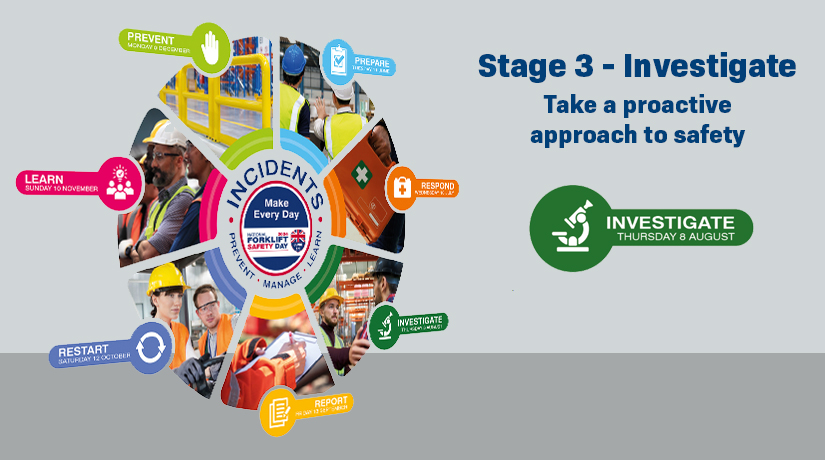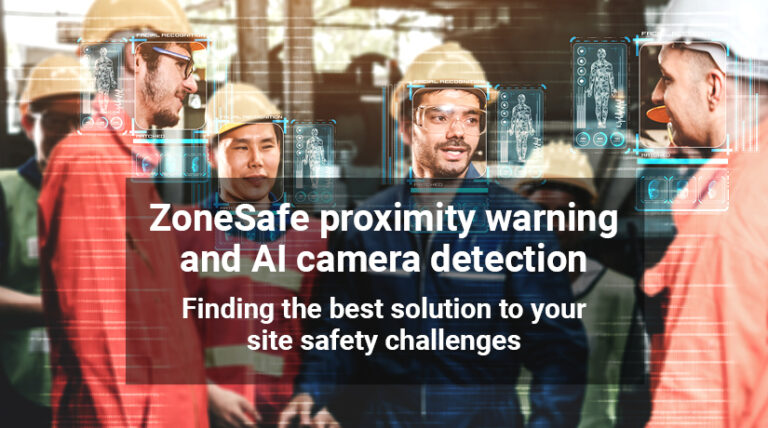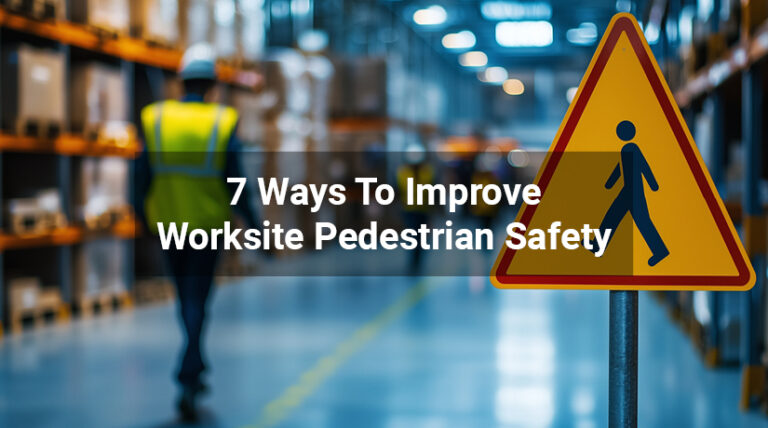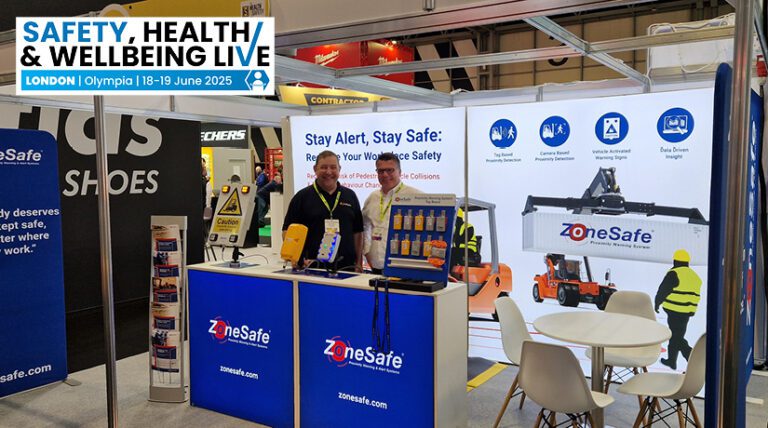The National Forklift Safety Day (NFSD) campaign was launched earlier this year under the slogan ‘Prevent – Manage – Learn‘. This year’s initiative will explore what actions should be taken before, during, and after a forklift accident.
The extended program will focus on the seven stages of the forklift incident cycle. Over seven months, from June to December, the strategies for each stage will be highlighted and discussed on specific dates.
The August edition of the campaign launched this week with the third stage of the cycle:
INVESTIGATE – Forklift Accident
Following any forklift accident, a thorough investigation should take place. It is essential to determine what went wrong and use this knowledge to ensure it doesn’t happen again. Every incident and near miss should be used as a learning opportunity. If trends or similarities between multiple incidents are noted, this information must be taken onboard and fully analysed to ensure common hazards are addressed.
Legal Requirements
The Management of Health and Safety at Work Regulations: 1999 require employers to plan, organise, control, monitor, and review health and safety arrangements. Incident investigation is an important part of this obligation.
The investigation plays a vital role in helping to identify root causes and assess accountability. This process not only builds knowledge of potential hazards, helping to reduce the chance of the same thing happening again, but it is also crucial in protecting the company should civil action be taken. In this case, businesses are required to provide ‘full disclosure of the circumstances surrounding the accident’ to legal teams.
A detailed report of the incident, which identifies possible causes and suggests action to avoid further incidents, shows that the business is committed to a positive safety culture and accident mitigation.
The process
Following an accident, the site must first be secured and the injured person/s treated.
The investigator should then:
- Identify the final position of the load, forklift truck and any lifting accessories
- Look for eye witnesses
- Take relevant photographs of the scene
- Obtain CCTV footage
A decision should be made on whether to suspend work activities until after the investigation and whether a temporary risk assessment is required before restarting work.
All equipment must be examined in accordance with lifting operations and equipment regulations. An approved technician must fully inspect the forklift and all findings should be sent to the investigator in writing.
The evidence
All evidence should be collated for the next stage of the investigation.
It is important as much evidence as possible is collected to create a clear picture of the incident. Evidence takes two forms – physical evidence and witness statements.
Physical evidence can include CCTV, audio recordings, hard evidence such as equipment, training records, and photographs. Multiple witness statements should be collected where possible to help create a broader picture of what exactly occurred.
Evidence must then be thoroughly examined and assessed.
The interview
The interviewer should be trained and competent and approach the investigation openly and in a non-judgemental way. The interviewer is required to:
- Write down exactly what the witness says verbatim
- Ask the witness to read the statement and check that they agree with the content
- Ensure the witness signs and dates to show that it is a true representation of what they saw
- Provide the witness with a copy of the statement
The full resource pack including an investigation checklist is available on the UKMHA website – https://nationalforkliftsafetyday.co.uk/
INVESTIGATE with ZoneSafe
ZoneSafe helps prevent accidents by alerting drivers and pedestrians to the presence of risk. It creates a strong line of defence in accident prevention. Should an accident occur, the data collected by the ZoneSafe system can prove vital in the follow-up investigation.
The ZoneSafe data management feature helps managers understand how and why an accident occurred. This insight can then be used to help avoid future incidents. Data is recorded through the in-cab controller and personnel tags and stored in the cloud. It is then easily downloaded to provide a clearer picture of what happened. The data offers detailed insights into vehicle movements, worker actions, and behaviours that may have contributed to an incident.
Contact ZoneSafe to discuss your forklift safety concerns




